Follow Us
Trending
Recent Posts
- Explore Rotorua: Top Things to See and Do in NZ's Geothermal Gem22nd March 2024
- Tsing Yi Peak Hike (Sam Chi Heung) - Tsing Yi's Highest Point6th March 2024
- Mead's Wall Guide - LOTR Filming Location (Easy Access!)29th February 2024
- Explore Rotorua: Top Things to See and Do in NZ's Geothermal Gem
Drone Laws in Thailand
Updated March 2024
If you love flying your drone as much as I do and are travelling to Thailand, I bet you’re curious to learn about the country’s drone laws. After all, you’d want to capture Thailand’s stunning natural beauty from every possible angle!
Quick disclaimer: This post is based on my experience of registering a drone in Thailand. With the constantly evolving rules and regulations, your experience may differ. Please always refer to the CAAT and NBTC websites to keep up with the latest drone laws in Thailand.
Contents
ToggleThailand Drone Laws
Any drone with a camera, regardless of its weight, must be registered with the authorities in Thailand.
Drones laws in Thailand are regulated by two authorities, CAAT and NBTC.
All drones weighing more than 250 grams or any drone with a camera must be registered with both authorities.
Drone registration in Thailand can be a slightly lengthy process, and you should start the process at least two weeks before your departure to Thailand. I will do my best to highlight the steps to make the registration process easy to understand.
To comply with drone laws in Thailand, you must complete the following three steps.
FEIC, an insurance company, offers a service that covers all three steps below (insurance + registration) for a fee. Click here to view their insurance + registration service.
However, if you choose to not go with this option, you can still follow the DIY steps listed below.
Step 1 – Drone Insurance in Thailand
- Time for approval – 2–3 days for the insurance certificate. 7 days for the entire insurance policy.
- Cost – THB 1,599
Before registering your drone with the authorities, you need first to insure your drone. Without insurance, you cannot proceed with registering your drone.
I am sure there are a few drone insurance providers in Thailand, but I went with FEIC.
Their website is easy to navigate, and I had no issues registering my drone with them.
Their lowest-tier plan is sufficient as the insurance liability limit covers THB 1 million, which is the minimum requirement.
After submitting the form, I received the drone insurance certificate within 2 days. This certificate can be used to register your drone with CAAT and NBTC.
The official insurance document can take up to 7 days to arrive. However, the drone insurance certificate is sufficient to proceed to the next step.
Step 2 – Thailand Drone Registration
Unlike most other countries that require drones to be registered only with the civil aviation authority, Thailand requires drones to be registered with two authorities.
The first is the Civil Aviation Authority of Thailand (CAAT). And the other is the Office of The National Broadcasting and Telecommunications Commission (NBTC).
The CAAT requires the registration of the drone and drone pilot. The NBTC requires registration of the frequency used by the drone.
The process is also documented on the CAAT website.
CAAT Drone Registration
- Time for approval – Up to 15 days but it took me 7 days (see update below)
- Cost – N/A
- CAAT website
To start the registration process, head to the CAAT website and create an account.
Once logged in, select Registration under the side menu and the option applies to you.
- บุคคลธรรมดา(สำหรับคนไทย)/Individual(Thai Nationality)
- บุคคลธรรมดา(ต่างชาติ)/The Foreigner
- นิติบุคคล/Juristic Person
I am going to assume you picked “The Foreigner”.
Next, proceed to fill up the form along with a self-declaration. I found it odd that the self-declaration form was a separate form with no link to download it. But I was able to locate it on their website.
Once submitted, the approval process can take up to 15 days.
I didn’t receive an email telling me that my application had been approved. So, I had to check the status of the approval on the website.
To check the status, log in and click on History in the side menu.
I found a discrepancy in the translation. If your application is approved, it says “Request approval” in English. But the Thai version translates to “The request was approved”.
March 2023 update: According to a comment below, the CAAT application might require you to upload an image of your passport and arrival stamp, similar to the NBTC application.
NBTC Drone Registration
- Time for approval – Up to 7 days but full approval can only happen once in Thailand
- Cost – THB 214
- NBTC website
You can simultaneously also begin your NBTC application.
The registration process with the NBTC was slightly trickier because it cannot be completed or approved till you arrive in Thailand.
And that’s because the form requires:
- Copy of the visa (cannot submit if you’re eligible for visa on arrival)
- Copy of the arrival stamp on your passport (can only submit once you arrive in Thailand)
- And the payment of a fee which must be done in person (Step 3 below)
But you can still fill in all the other details and save the form. You might need to Google the frequency and transmission power of your drone.
And there was a question about which NBTC district office applied to me. I wasn’t sure which one applied to me, so I picked number 42.
I also made the mistake of submitting my application with a document that said “visa on arrival” as proof of my visa and arrival stamp. Fortunately, I received an email stating that my application was fine and that I could update it with the proof once I arrived in Thailand.
After I arrived in Thailand, I updated my application and it took 1-2 days to get the approval email, which asked me to proceed with the fee payment.
Step 3 – NBTC Fee Payment
The final step of the process was the most challenging for me because it involved making a payment, in person at a local bank. There was no option for online payment when I applied!
Once the NBTC application is approved, you will receive an email with a “Bill Payment Pay-IN Slip”.
My email stated that the fee payment could be made at Kasikorn Bank PCL or cross-bank bill payment via electronic channels. So, I located the closest Kasikorn Bank branch and walked in one morning.
However, I couldn’t make the payment because the bank told me that they no longer accepted such payments and that I should go to a Krung Thai Bank branch.
Unfortunately, there was no Krung Thai Bank near my hotel, so I had to wait till I made a trip to go to Old Phuket Town to make the payment. Luckily, there is a 7-day window to make the payment.
I found this step to be slightly inconvenient. Although the Bill Payment Pay-IN Slip lists many banks that accept the payment, my experience was different.
I really wish there was an easier (online) payment method. Especially, as I imagine many tourists carry their drones into Thailand and if they stay in a small town, a bank might be hard to locate.
Anyway, once the NBTC fee is paid, all formalities regarding your Thailand drone registration are complete!
Flying a Drone in Thailand – Other Safety and Operation Requirements
- Drone pilots must maintain a visual line of sight with their drones at all times.
- Drones must not be flown close to manned aircraft
- Drones must not be flown close to any person, vehicle, construction, or buildings at a distance of fewer than 30 meters (98 feet) horizontally.
- Drones must not be flown in restricted areas without authorization.
- Drones must not be flown within 9 kilometres (5 miles) of an airport or temporary airfield except with special authorization.
- Drones must not be flown higher than 90 meters (295 feet).
Time of Operation
Only during the day-time.
Maximum flying altitude
0
metres
FAQs
Drone laws in Thailand can be amended or changed without notice. So, it’s best to always check the official FAQs on the CAAT and NBTC websites.
No-Fly Zones
There are also designated no-fly zones in Thailand. The list of no-fly locations and maps can be found on the CAAT website.
Can you carry your drone to Thailand?
Yes, flying in and out of Thailand with your drone shouldn’t be a problem.
To be overcautious, carry printouts or PDFs of your approvals. You never know if you may need them.
My experience of flying a drone in Phuket, Thailand
Once you’re over the hurdles of registering your drone, it’s a joy to fly your drone in Thailand and capture incredible photos.
During my stay in Phuket, I saw plenty of drones along the beaches. However, I don’t advise flying over large crowds or within a city.
I also saw someone flying their drone next to the Big Buddha in Phuket. I don’t think it was allowed but no one said anything to them luckily.
Some high-end properties have their own drone rules. During our stay at one such property, there was a sign in the room telling guests that drones are not allowed on the premises.
I guess what they meant was that guests shouldn’t take off their drones from the hotel or fly over the property.
As with any country, follow the rules and apply common sense when flying your drone in Thailand. We hope that you found this guide on drone laws in Thailand resourceful.
Thailand Aerial Photography Gallery
Back to international drone laws



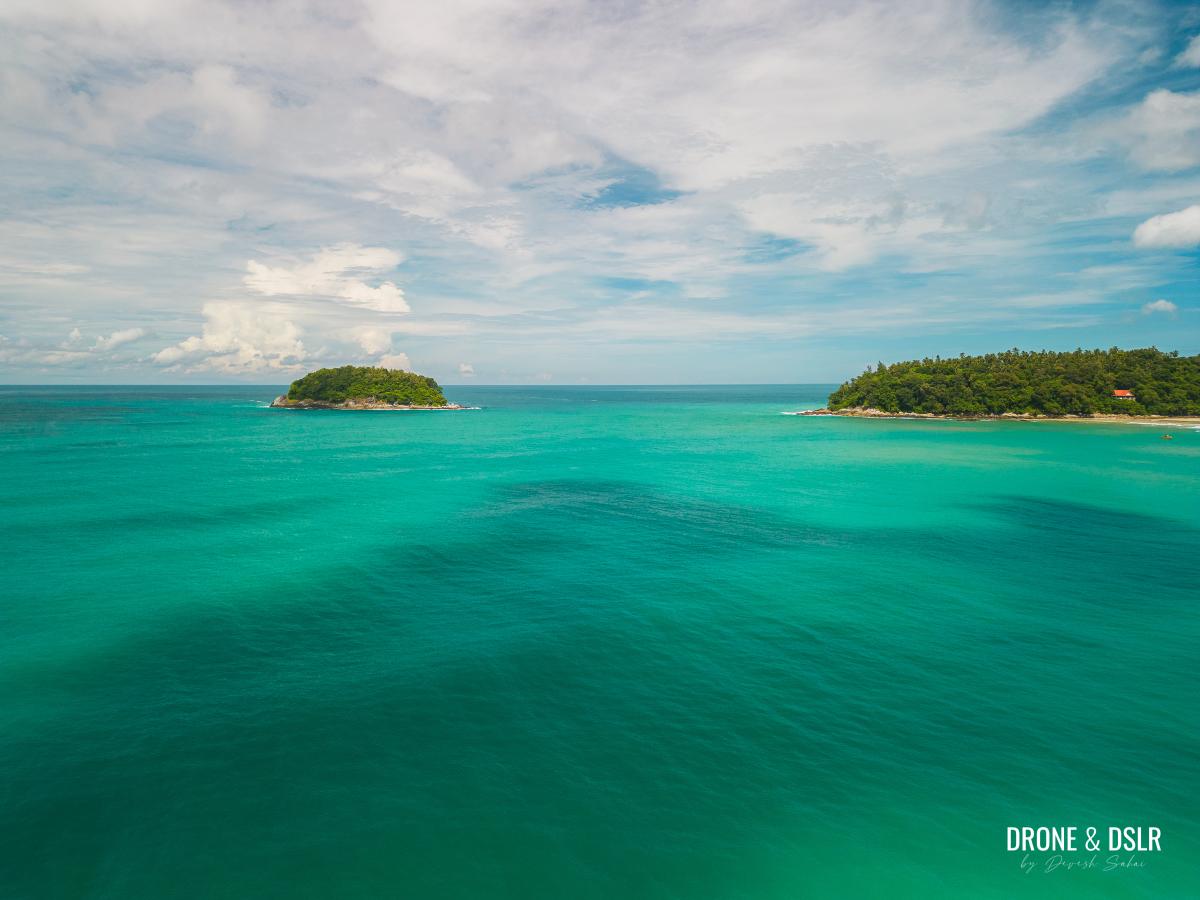

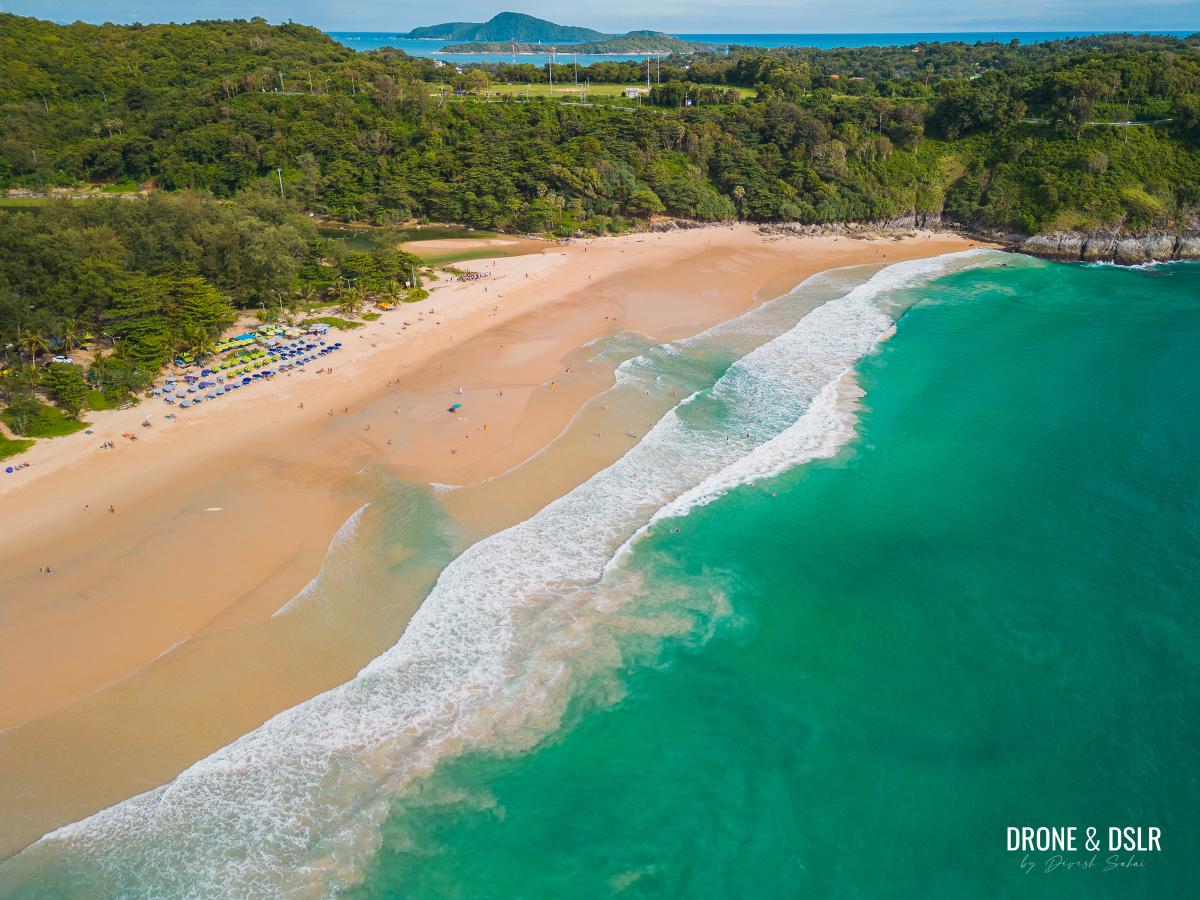
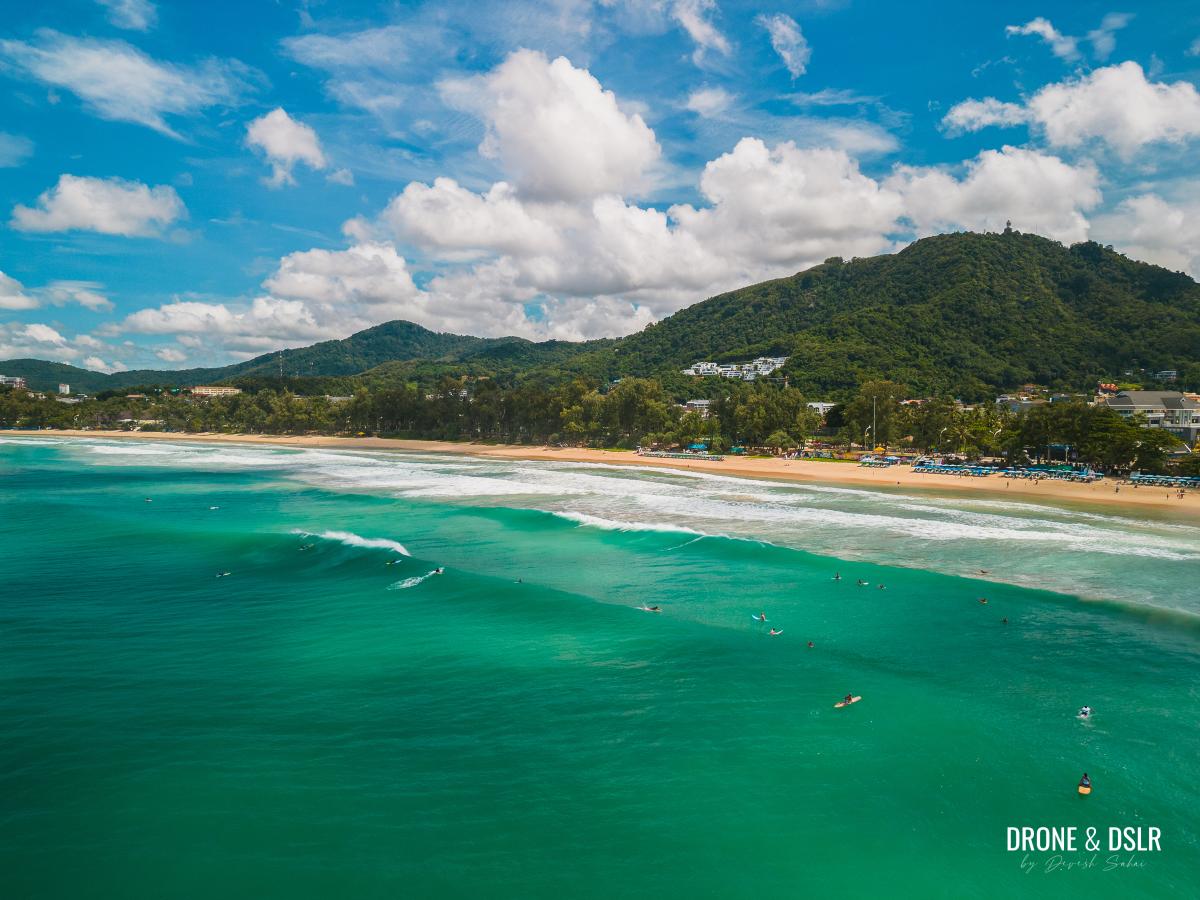
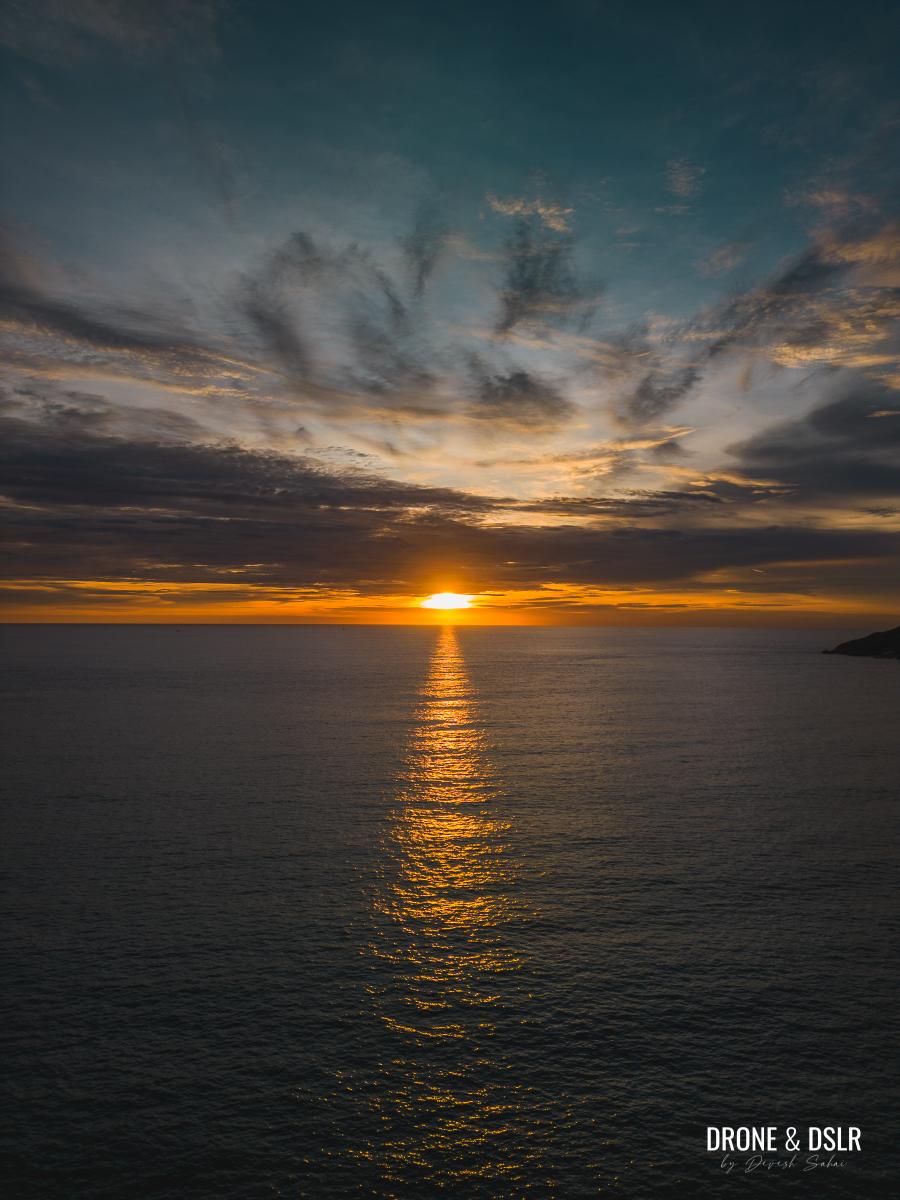
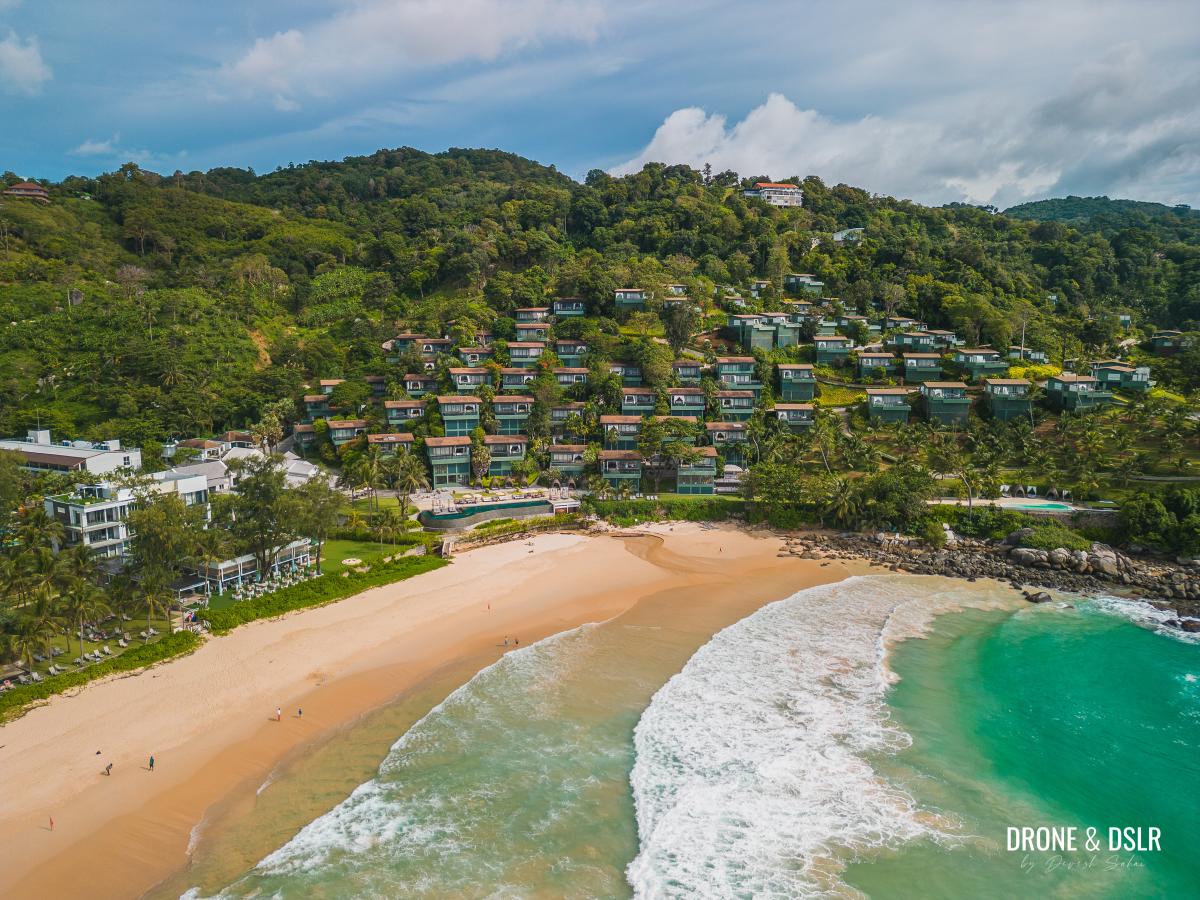
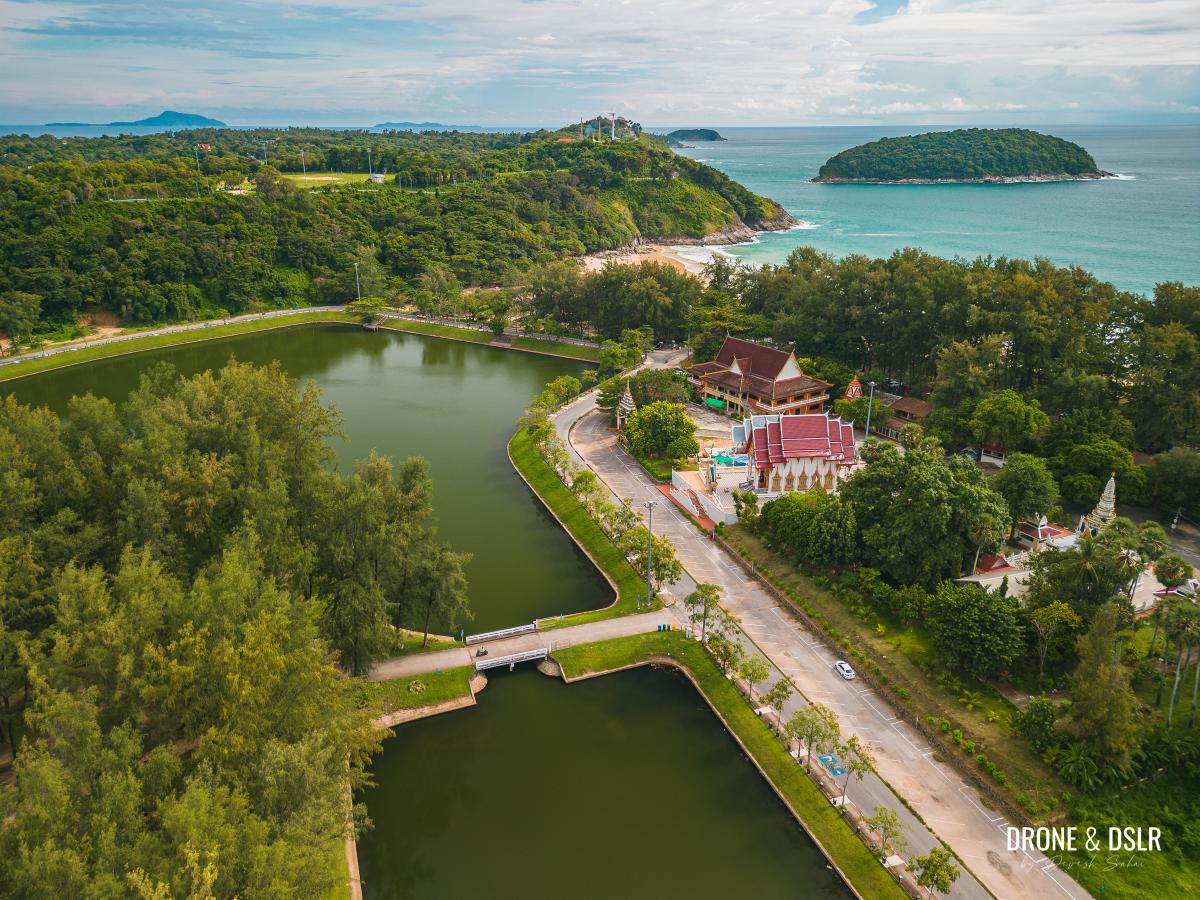
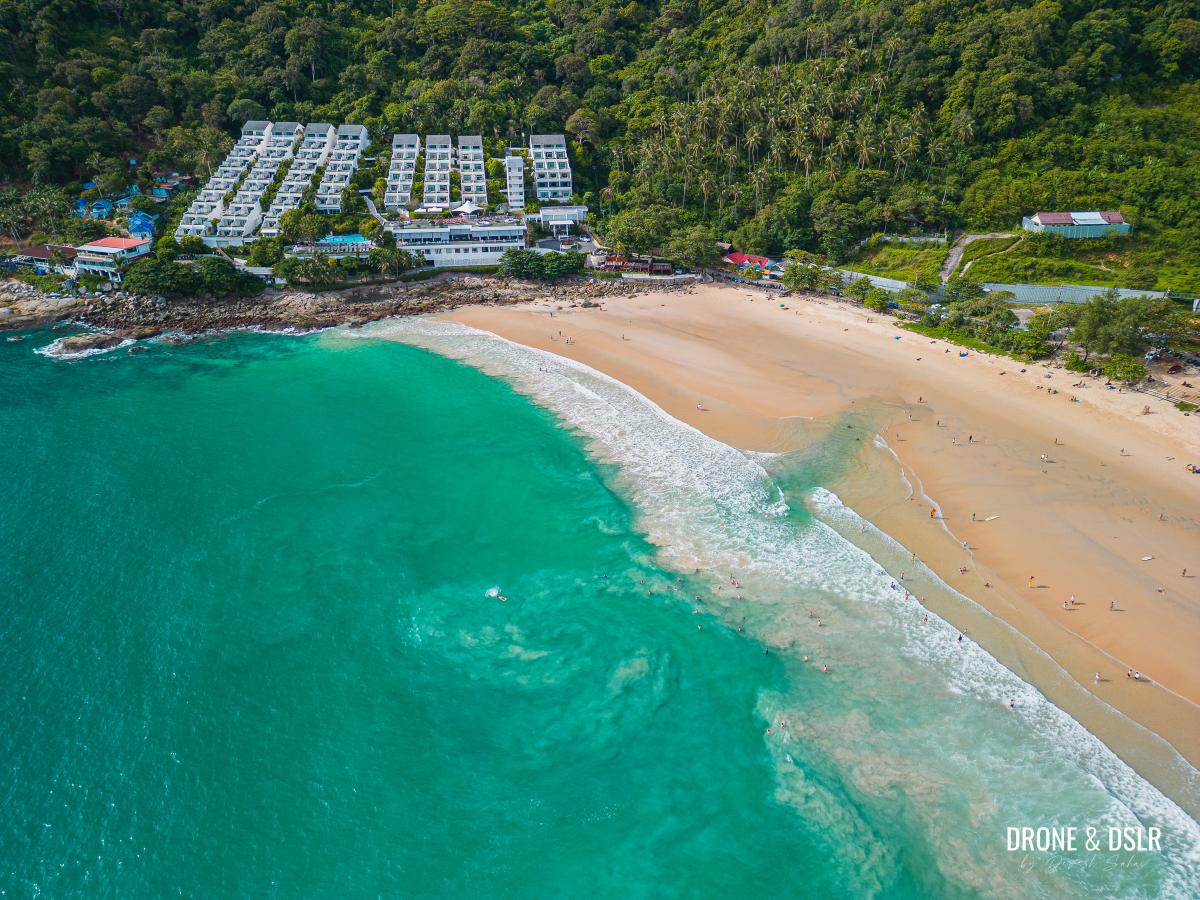
47 Comments
Great help and advice re. Drone. Thank you. I got thje insurance and I got the CAAT approval. For the NTCB, one question at the end asks: Legal Document. What’s this ?
Hi Craig,
I’m not sure if I remember a line for a legal request. Is it optional?
no, it does not appear to be optional, devesh. yoiu dont recall that? i might just leave it blank.
I can’t seem to recall it. Is it under any particular section of the form?
They have a FAQ doc on the site that might be able to help (even if it’s in Thai).
Hi do you live in Thailand or just in vacancy.
As I am in Europe and want to take my mini 3 pro 249g , for leisure , how can I get insurance before registering with NBTC and CAAT. It’s so complicated. My trip is for august
You mean once we are in Thailand we must looking for a company to subscribe insurance and then register.
But if I don’t want to fly my drone in Thailand , am I the right to stay and get inside the country with my drone until I move to Laos. Cause not easy to do register.
Can you give more details and advices
Thanks
Hi Suzy,
I’ve listed the steps above to register your drone from outside Thailand. I got it registered and even paid for the insurance online.
Of course, you can carry your drone to Thailand and not fly it. That’s your choice.
But if you want to register your drone for Thailand, please follow the three steps above. They should be simple to follow 🙂
Hello all, I am filling all the CAAT register, already paid for the insurance, but in the CAAT page, is asking already for my passport and on arrival visa and also for stamp before submiting anything.
As you said in this post, that was only needed on the NTCB.
It is strange that they ask for this in the CAAT too.
Hi Danny,
It is possible that the requirements may have changed now. Thanks for informing me!
Hi do you live in Thailand or just in vacancy.
As I am in Europe and want to take my mini 3 pro 249g , for leisure , how can I get insurance before registering with NBTC and CAAT. It’s so complicated. My trip is for august
You mean once we are in Thailand we must looking for a company to subscribe insurance and then register.
But if I don’t want to fly my drone in Thailand , am I the right to stay and get inside the country with my drone until I move to Laos. Cause not easy to do register.
Can you give more details and advices
Thanks
Hi Devesh
Thanks a lot for your advices so helpful
I begin to subscribe with FEIC as you and hope it’s ok.
Very precious to have some informations from you if you have another advices to give don’t hesitate to write for all of us.
?
Hi, if the drone is registered, how long is it valid?
Hi Cisah, the validity is for two years.
Unfortunately (within only a few weeks of this pages stated publishing date), two of the links you provided to reach a DL page of the CAAT, and the landing page for applying for a frequency permit with the NTBC are now Error 404.
https://uav.caat.or.th/download.php
https://anyregis.nbtc.go.th/accounts/
Could you please retrace your steps through the respective websites, and update you article with current/valid links?
Thanx.
Thank you for pointing out the broken links!
I’ve updated the link for NBTC but the link for CAAT is working on my end. Could have been a temp issue.
Hello Debesh,
With FEIC they can do registering for us around 1498THB CAAT and BNTC
Is it worth to let them continue the demarche for us.
I only take the first option for my insurance as you 1599THB
When I red how difficult you had to find a place to pay the bill maybe I will ask to FEIC to do the job.
But thanks to you I achieve to have my insurance.
Thanks guys if there something new just let us know
You might find it easier to pay them. I was in a location with fewer banks.
But yes, please get the insurance and follow the process.
This is 2023 and the drone rules have changed.
General Rules for Flying a Drone in Thailand
Based on our research and interpretation of the laws, here are the most important rules to know for flying a drone in Thailand.
All drones must be registered if they 1) Have a camera, and 2) Weigh 2 kilograms (4.4 pounds) or more. Register here.
Drones weighing more than 25 kilograms (55 pounds) must be registered with the Minister of Transport.
Drone pilots must maintain a visual line of sight with their drone at all times.
Drones must not be flown close to manned aircraft
Drones must not be flown close to any person, vehicle, construction, or buildings at distance less than 30 meters (98 feet) horizontally.
Drones must not be flown in restricted areas without authorization.
Drones must not be flown within 9 kilometers (5 miles) from an airport or temporary airfield except with special authorization.
Drones must not be flown higher than 90 meters (295 feet).
For more information on Thailand’s drone laws, see this announcement from Thailand’s Ministry of Transport.
My Thai friend has a DJI mini 2 registered under both CAAT and NBTC with Insurance.
So my question is, i am a foreigner, can i fly the drone ?
I’m not sure. But if you’re an experienced drone pilot, I think it should be fine.
Hej.
Vi ska åka till Thailand / Koh Samui i mitten av september 2023.
Jag har läst förmycket om hur jag ska gå till väga men löser det ändå inte. Brukar inte vara “trög / osmart” men här känner jag mig så vilsen och förvirrad.
Jag har en Dji Mavic Mini 3 PRO som jag gärna vill ha med mig och ta fina foton av den fantastiska miljö Thailand erbjuder.
Finns det någon enkel förklaring hur jag går till väga, har läst din guide men åh vad jag är förvirrad.
Finns det ens möjlighet för mig att flyga lagligt i Thailand och vad är de olika kostnaderna? Kan jag verkligen göra allt klart från Sverige innan vi åker den 16:e Septemeber 2023.
Går det att lösa det med försäkring också?
Jag har svensk drönarkort för alla kategorier.
Tacksam för all hjälp jag kan få. Tack.
// Mvh Michael
Hi Michael,
Yes, it’s possible for you to get everything done before you leave for Thailand, including insurance.
All you have to do is follow the steps and register yourself with the two authorities in Thailand and get the insurance online. Some steps can only be completed once you’re in Thailand. But after you’ve registered your drone, you can safely fly by adhering to the rules.
The information you provided in this article was pure gold. I followed your advise and each step was completed very quick. FEIC took one day and CAAT took 5 days (3 working days) to complete. Very happy I found your site. Thanks again.
Thank you, Mel! I’m so glad to hear it 🙂
Hey, thanks for the informative post!
I’m heading to Thailand in January and plan to take my Mini 2 with me. 2 questions though:
1. I already have an insurance policy, with global coverage and amount exceeding the required amount. Do you know if this will be eligible, or do I have to purchase the policy specifically for Thailand?
2. Reading your article I’d assume it would be beneficial for me to get the visa from local embassy, even though I’m eligible for a visa upon arrival, just to speed things up? I’ll be staying for only 2 weeks and considering the time it took you, I might end up getting the licence at the end of my stay…
Hi, good questions.
For 1, I think you should be good. If you submit your insurance docs and the authorities accept it, then no problem. Otherwise, getting local insurance is instant.
2, yeah that might be a way to get it quicker if you have the option to get a visa beforehand.
hello i am applying for the NBTC ahead of time of my arrival
i understand the completion can only be done once in thailand.
However , i see no save button for my application . only “cancel” or “apply”
does apply means saving it?
Thanks in advance
Does the form auto-save if you enter some details and close it?
Thanks for the info. In addition to getting insurance from FEIC, would you also recommend using drone registration service from FEIC which costs THB 1,498 online to avoid payment of fees in person at a local bank?
https://www.feic.co.th/thailand-drone-registration-service
Hey Wayne,
This looks like a new service and a pretty good one at that. It seems to do away with a lot of effort from your end.
I think it’s worth a try.
I will try the drone insurance service and report back how it goes. I am from the United States and will be visiting Phuket for 8 days and am not required to have a VISA but the NBTC drone registration seems to require a photo of my VISA. Is VISA needed? Also, I am getting SSL handshake failed error going to CAAT site at https://uav.caat.or.th/index.php#. I guess the site is having issues. Thanks.
Would love to hear about your experience!
For the visa, the arrival stamp in your passport should suffice.
It seems like the website is working fine now. They must have fixed the SSL error.
Hi can u please help how to get and pay for drone permission !
You can try this new service
Hello. If my drone is 249g, do I still need to register it? I’ve read that if it’s less than 250g, there’s no need. Is this correct?
In Thailand, all drones with cameras, regardless of their weight, must be registered
For NBTC fee, can you go to one of their NBTC office to pay or have to pay at Bank?
When I applied, you could only pay it at a bank. However, I belive you can now pay the fee through the insurance agency (see link above).
When registering with CAAT, on the 2nd screen I’m unable to upload more than 1 photo because the upload screen only allows 1 upload file(can only select 1 file) and thus my registration gets rejected. After hitting “Submit”, I see new registration request in the History but there’s no link to upload more files. Anybody else run into this issue?
If you can upload a pdf file, then you could embed all your photos into a single pdf and upload that.
Big thanks Devesh. I don’t know why I didn’t think to combine all my PDF’s into 1 PDF.
Glad I could help!
Hi
Visiting Koh Samui for just three days and will then leave the country. I own a DJI Mini (249 grams). Will there be any issues flying? By the time I process of visa on arrival, making the payments and wait until approval, I will already be gone back home.
Please advise. Any reference for drone pilots who can be with me to shoot a family get together for three days would be great too.
You can try this service.
After reading another person’s post who was able to go directly to one of the NBTC offices to register and pay for drone registration, I tried to do the same at the NBTC Phuket office district 42 with all NBTC docs filled out, printed photos of drone, drone and controller serial #, passport, stamped entry into Thailand on passport, etc. but the person there stated to register online with photos of requirement docs. Luckily I had already created an account so I just completed it by uploading photos of docs but this process took a long because of slow cell phone service even though I bought eSim. After that, the person processed my registration. I then went to pay 214 THB in the office opposite of the person helping me with registration. I then went back to the drone registration person who printed out the approved drone registration certificate. This process seems much faster than driving to their bank to pay the fee and then wait 2+ days for the certificate.
Thanks for sharing your experience!
Trying to submit a form for a new dron here nbtc
It requested to enter a serial number. However, the error
Warning! The serial number was not found in the NBTC’s database system. Please contact the supplier.
It is strange.
Sometimes the site acts up.